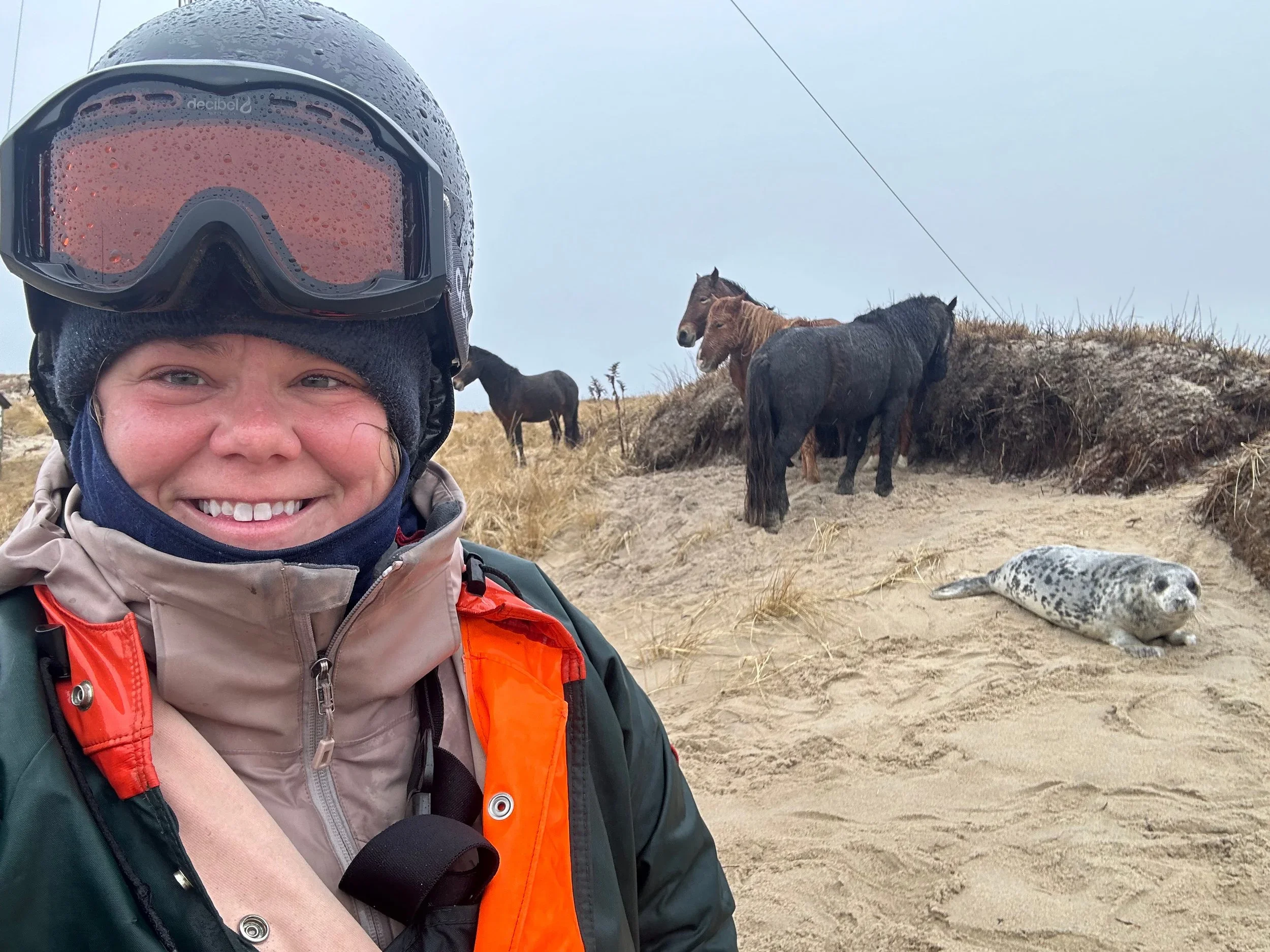SR3 Provides Veterinary Support to Pinniped Field Research Project
Aerial view of the West Spit, Sable Island
This past winter, SR3’s veterinarian, Dr. Michelle Rivard, spent two months on Sable Island, Nova Scotia, contributing to gray seal research. Dr. Rivard has now made this trip two years in a row to collaborate on multiple projects studying seals in the wild, conducted by the Department of Fisheries and Oceans Canada, Texas Tech University, University of Alaska Fairbanks and Woods Hole Oceanographic Institute.
Dr. Rivard on a rainy day on Sable Island, with a weaned gray seal pup and wild horses in the background.
Not easily accessible to people, Sable Island is located in the Atlantic Ocean, 180 miles southeast of Halifax, Nova Scotia, and is protected and managed by Parks Canada. The island is a narrow, crescent-shaped sandbar, approximately 26 miles long and only 0.75 miles across at its widest point. The island is home to hundreds of wild horses, as well as the largest gray seal colony in the world.
Gray seals live for 30-40 years and gather in large groups during the breeding season each winter. Every December to February, 400,000 gray seals aggregate on Sable Island to have their babies and mate, and about 80,000 pups are born each year on the sandy shores. Moms nurse their pups for approximately three weeks, during which time pups triple their birth weight! Pups typically wean at around 50 kg (110 lbs), at which time the mothers return to the ocean and the pup’s fat reserves help to sustain them throughout a post-nursing fast that can last for several weeks as they learn how to swim and hunt on their own. Gray seal pups are born with long, white fur that sheds around the time of weaning.
Gray seal mom and pup pair in the sand.
Sable Island provides a unique environment that gives researchers access to study gray seals in a location that is uninhabited by humans. Because Sable Island is home to such a large portion of the population, scientists are able to collect important life history data over the duration of an individual gray seal’s life. By permanently marking a subset of the animals, scientists can identify the same seal year after year and record important reproductive information about her and her pups.
Graduate students from Wood's Hole and Texas Tech University taking ultrasound measurements from sedated gray seal pup.
In addition to the population ecology work, there are multiple other research projects that are conducted to learn more about gray seal diet, movement, behavior, physiology and overall health. Dr. Rivard provided veterinary support to these projects to ensure safe and effective handling and sedation of the animals. Aside from gathering important data, these projects have provided the opportunity to refine pinniped field immobilization techniques to maximize human and animal safety while prioritizing animal welfare.
The invaluable information gathered throughout this field research allows scientists to model and predict changes to the population, develop techniques that can be used for future research projects, and has the potential to be applied to other pinniped populations throughout the world. Dr. Rivard was not only able to contribute her unique expertise to this project, but also learn from collaborators, transferring a knowledge base to the Pacific Northwest that we can apply to our local seals and sea lions.
Actions and photos permitted under Fisheries and Oceans Canada (DFO) and Parks Canada.




